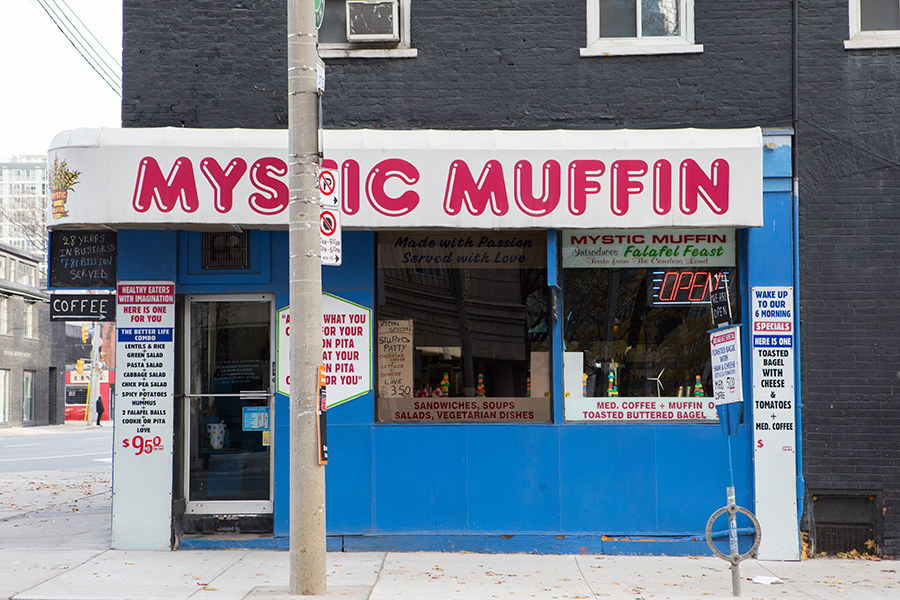

What
First Catholic bishop’s residence
Where
113 Jarvis
Why you should check it out
In the religious annals of old Toronto, John Strachan, Upper Canada’s first Anglican bishop, remains the most notable public figure.
Known for his Tory politics (which preached obedience and subordination) and ties to the Family Compact, Strachan also served on the Legislative Council of Upper Canada. Today there are schools and a street named after him near where his two-storey manse once stood at University and Front. It was there that loyalist forces gathered on the first night of the rebellion against the Family Compact led by Mackenzie in 1837.
Strachan was an outspoken critic of the rebels. The clergy held terrific sway over the politics of Upper Canada. His only equal in that regard was Alexander Macdonell (also known as McDonell). A staunch Tory himself, Macdonell would become Strachan’s religious counterpart as Upper Canada’s first Catholic bishop.
Like Strachan, Macdonell was born in Scotland, and his Catholic upbringing preached obedience to the Crown, but he was perhaps an even more strident crusader of Tory values. Indeed, he would take up arms in defence of the Crown in a number of wars, including in the War of 1812, when he raised a regiment against American Revolutionary forces.
His biography hypothesizes that his enthusiasm for defence of the Crown was born out of “an acceptance of the inevitable” but also offers that it was “more likely, it reflected the conviction of the Catholic clergy that only loyal submission would bring relief.”

Before his arrival in Upper Canada, Macdonell raised a Catholic regiment to defend British interests during the Irish Rebellion in 1798. The regiment would be disbanded and, with the men left destitute, Macdonell persuaded the Crown to give them land in Upper Canada in return for their loyalty.
Macdonell would first settle in Glengarry in the Kingston area. When he arrived in York for a visit in 1806 on a mission from the church, Catholics were few and far between.
The town had a population of approximately 200 people, of whom less than a quarter were Catholic. In all of Upper Canada, there were only three Catholic priests and three Catholic churches.
Macdonell reported his finding to his superiors in the church and would be given the task of acquiring land to establish more churches in the town. A plot near George on present-day Adelaide would be set aside “for the purpose of erecting a chapel for public worship.” But it would be destroyed by fire during the War of 1812.
By 1822, the Catholic population of York would grow to some 1,000 adherents. Macdonell would move from his posting in Glengarry to York and build a home at the corner of Jarvis and Richmond in 1832.
These days it’s barely noticeable under the crush of condos and sign for Mystic Muffin. But it once was the home of Upper Canada’s Catholic crusade.
Writer William Foster Coffin described Macdonell as “a medieval churchman, half bishop, half baron, [who] fought and prayed, with equal zeal, by the side of men he had come to regard as his hereditary followers.” Thomas D’Arcy McGee, the Irish poet and politician, would refer to him as the “greatest Tory in Canada.”
Macdonell was a man of many talents, despite his seeming subservience to the Crown. Chief among them were his powers of political persuasion.
As a member of the Legislative Assembly, he would eventually push for government salaries to be paid to Catholic priests and teachers in the colony in return for their loyalty to the Crown.
But unlike some of his other endeavours, the effort would be met with indignation by Anglican Church heads of Upper Canada, and Strachan in particular. Turns out their political ties were not enough to overcome their religious differences.

Read all of NOW’s Hidden Toronto stories here.
Hidden Toronto is a weekly feature exploring the city’s alternative history through contemporary landmarks












